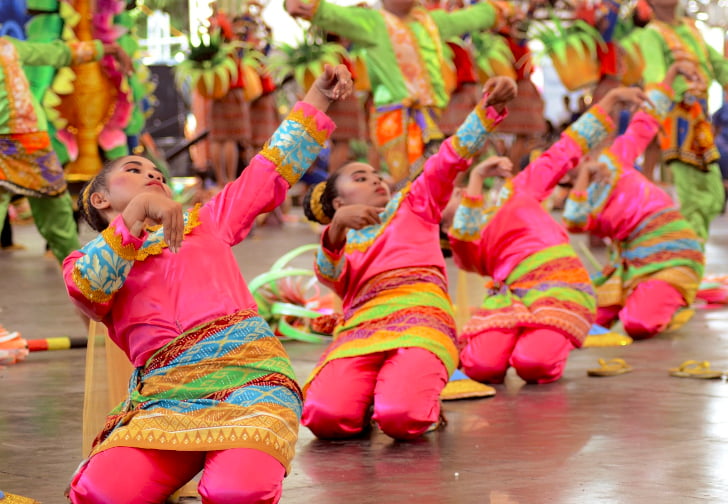The roots of Kadayawan can be traced back to ancient pagan thanksgiving rituals during which the indigenous tribes of Mindanao came to Mount Apo and offered fruits, vegetables, rice, corn, and flowers to the gods to thank them for a bountiful harvest.
The present-day festival was established in the early 1970s by Mayor Elias B. Lopez, who encouraged local tribes to revive and showcase their thanksgiving rituals, as well as traditional costumes, song and dance. The event began to take its current shape in 1986, when the city government began to promote it as a way to unite the people during the turbulent times that followed the ousting of Ferdinand Marcos.
The original name of the festival was Apo Duwaling in honor of Davao’s three icons: Mount Apo, the durian fruit, and the waling-waling orchid (Vanda sanderiana). In 1988, Mayor Rodrigo Duterte (who would go on to become President of the Philippines) gave the festival its current name. The name is derived from the Mandaya word madayaw, which means “valuable” or “treasured”.
The Kadayawan Festival is held over a week in the second half of August. During the event, the indigenous tribes of Davao showcase the impressive variety of fruits and flowers grown in and around Davao, as well as the diverse indigenous cultures and heritage of the Davao region.
One of the main highlights of Kadayawan is Indak-Indak sa Kadalanan, a colorful parade and street dance competition featuring representatives of eleven indigenous tribes of Davao dancing through the streets of the city in vibrant traditional costumes. Every participating group creates a choreographic interpretation of a legend or story relevant to their respective indigenous tribe; each performance should last no more than eight minutes. After the parade, one of the groups is declared champion. There is also a separate competition for school groups.
Another highlight of the Kadayawan Festival is Pamulak sa Kadalanan, a floral float parade featuring about two dozen elaborate floats adorned with local fruits and flowers, including durian (despite its distinctive smell) and waling-waling. The floats compete for prizes in several categories: large, small, and non-motorized.
Other events and activities in the festival program include the Tribal Village where local tribes showcase their arts, crafts, music and dances; the Agong Kulintagan music competition featuring the traditional musical instruments of the region such as the agong and the kulintang; the Hiyas ng Kadayawan beauty pageant featuring representatives of Davao’s indigenous tribes; farmers’ markets, art and craft fairs, exhibitions of local art, various contests and competitions, food festivals, and more.
Back in the day, the Kadayawan Festival used to include traditional horse fighting. However, the horse-fighting event was pulled from the program over a decade ago at the insistence of animal rights activists due to its cruelty.





